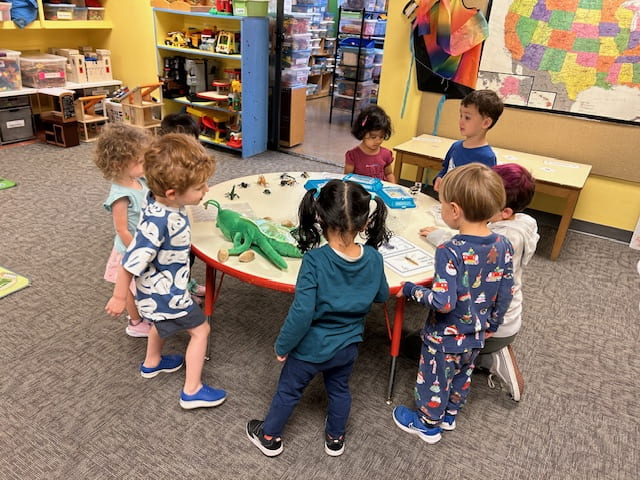
Our topic was: FOOD CHAIN
- Chains are meant to be strong. Their overall strength depends on each link.
- If we remove a link the chain is broken.
- Every living thing depends on the sun. It is the source for each food chain.
- Your lunch is made by the sun! For instance, if you have a peanut butter and jelly sandwich, the peanuts and grapes grow on plants and the bread is made of another plant called wheat.
These plants all need the sun to grow.
- Animals which eat other animals are called predators.
- Animals which are eaten by other animals are called prey.Animals which eat plants are called herbivores.
- A typical food chain in nature might look like this: The sun grows grass. The grasshopper eats the grass. The spider eats the grasshopper. The turkey eats the spider. Man eats the turkey.
- We need to respect and protect each link in the food chain.
Book Suggestions: What If There Were No Bees, What If There Were No Gray Wolves, What If There Were No Sea Otters all by Suzanne Slade & Carol Schwartz



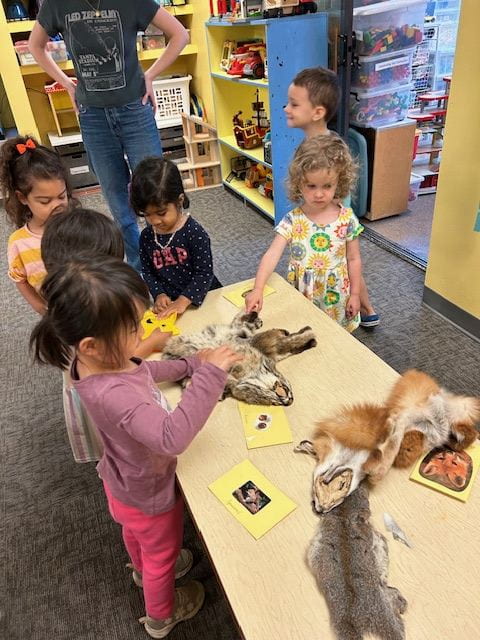







Our topic was: EGGCITING
- Animals that lay eggs are called Oviparous. We have many egg layers in Missouri. Not just birds!
- Some animal mothers care for their eggs. Others may leave their eggs and the babies must fend for themselves upon hatching.
- Bird eggs come in many colors…sometimes used for camouflage. The hummingbird lays one of the smallest bird eggs, while an ostrich lays one of the largest.
- Other egg-layers include insects, frogs, toads, salamanders, lizards, turtles, and some snakes.
- Eggs contain everything the baby needs before it hatches…including food, water, and air.
- Bird eggs have a hard shell. Reptile eggshells are flexible and leathery. Amphibian eggs are laid in the water and are surrounded by a jelly-like covering.
Book Suggestions: Chickens Aren’t The Only Ones, by Ruth Heller An Extraordinary Egg, by Leo Lionni An Egg is Quiet, by Aston and Long

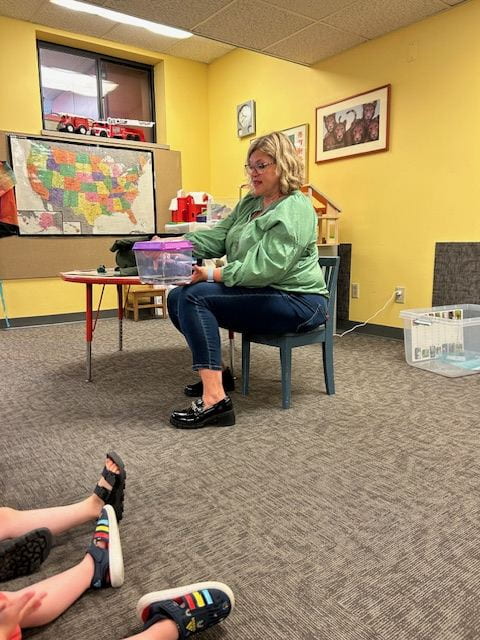


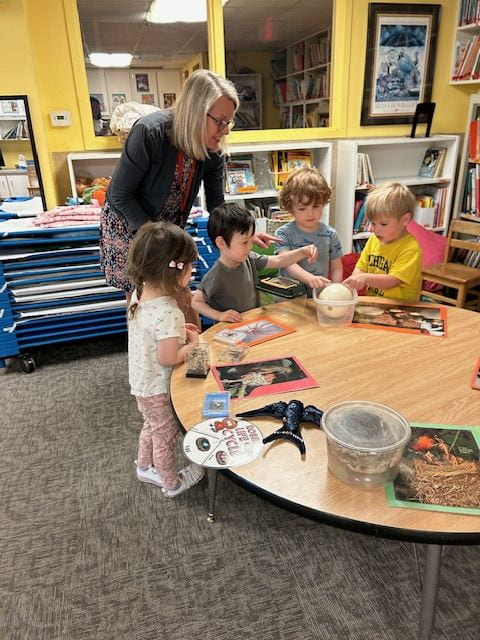





Lessons from Ms. Becky
Nature on the Move was here today, March 18th
Our topic was:
HEALTHY EARTH
- April 22 is Earth Day. We have a special day called Earth Day to remind us that we need to take care of our planet every day, so it remains a great place for us and all the animals to live.
- What can we do to help? Remember the three “R’s”: REDUCE, REUSE, RECYCLE
- Reduce: Turn water off when brushing your teeth or washing your hands. Turn off the TV, tablets, or lights when not in use. Try to walk or bike to nearby destinations instead of taking the car.
Can you think of more things to do?
- Reuse: What can you make that old milk jug into? What about the can from those green beans you had last night?
- Recycle: Many communities either have weekly pick up or a deposit center nearby.
- Litter is dangerous to wild animals. Always throw your trash in a sealed container.
- Protect wild animals by cutting each section of the plastic rings around soda cans so animals cannot get stuck in them. Animals can get stuck in the plastic rings from milk jugs, too.
- Don’t pollute our water, air and land. If each one of us cleans up after ourselves Earth will be a better place to live.





Lessons from Ms. Becky
Nature on the Move was here today, February 12th.
Our topic was: OWLS
- Owls are among the group of birds called raptors, or birds of prey. Other raptors include hawks and eagles. Hawks and eagles are diurnal while owls are nocturnal.
- The most common Missouri Owls are the Great Horned Owl,
Barred Owl, Barn Owl, and Screech Owl.
- Owls’ wings are serrated at the leading edge so that they can fly silently.
- Owls have large eyes for seeing their prey at night. Their eyes are fixed in the socket, but they can turn their heads up to 270 degrees to see around them.
- Owls also have excellent hearing. Their ears are on their faces and are hidden by feathers.
- Owls have sharp, curved claws called talons, which they use to catch and kill their prey.
- Owls eat mice, frogs, snakes, insects, rabbits and even skunks!
Book Suggestions: Owl Babies by Martin Waddell and Owl Moon by Jane Yolen
Song: If you want to be an owl shout-Who! Who! If you want to be an owl shout-Who! Who! Then you get to sleep all day and at night you get to play. If you want to be an owl shout-Who! Who! (Continue with Flap you wings-Shh! Shh! and Look around-Twist, Twist!)


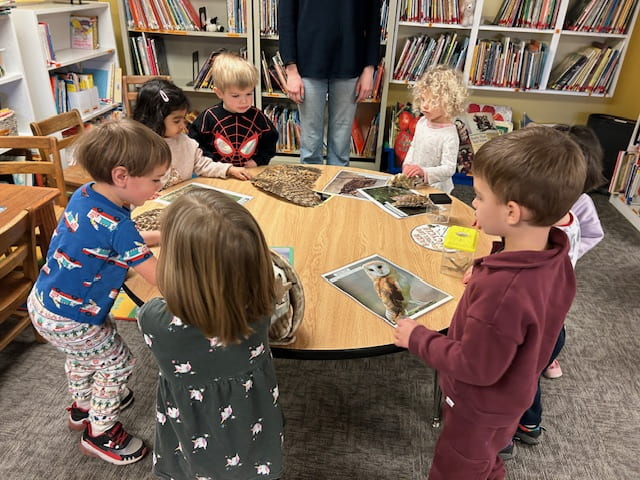



NATURE ON THE MOVE was here today, January 8th.
Our topic was: GETTING READY FOR WINTER
- People prepare by wearing warmer clothes and shoes. They also participate in different activities than the summer…sledding instead of swimming, hot cocoa instead of popsicles.
- Trees prepare by losing their leaves and going dormant. Spring will bring new leaves.
- Our animal friends have 3 choices…migrate, hibernate, or stay and adapt.
- Animals who cannot find food and protection in the winter might migrate to warmer places.
Monarch butterflies, hummingbirds, ducks and geese migrate.
- Other animals that cannot find food and cannot migrate will hibernate. Hibernation means more than sleeping all winter. True hibernation means slowed breathing, slow heart rate, and low body temperature. Groundhogs, bats, reptiles and amphibians are a few of Missouri’s true hibernators.
- Animals that are able to find food will stay active during the winter. Squirrels, deer, coyotes, foxes and many birds can be seen all winter long in Missouri.
*Homemade or store-bought bird feeders give your child a great opportunity to care for and observe many different types of birds. It’s a great family project. Don’t forget fresh water!




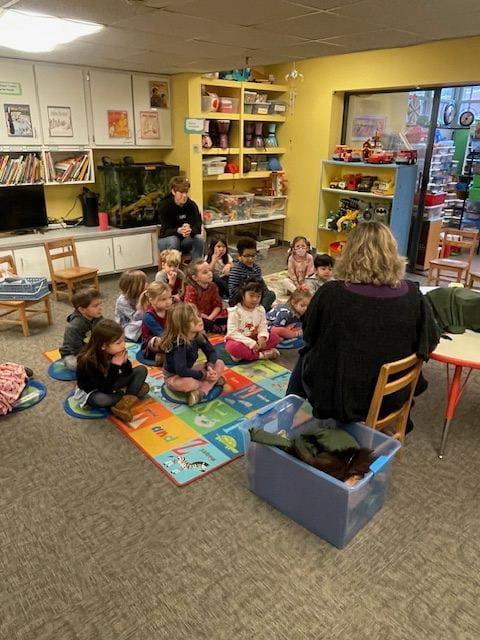


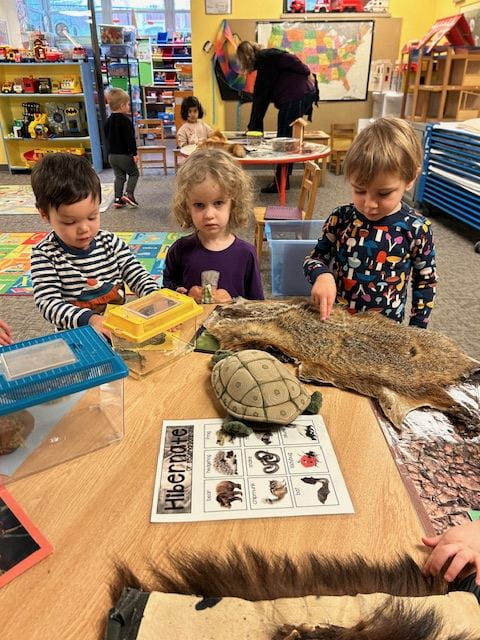





NATURE ON THE MOVE was here today, December 11
SOUNDS OF NATURE
- Adult animals (usually males) make sounds for many reasons including establishing territory, looking for mates, and communicating danger is near.
- Young animals make sounds for some of the same reasons that human babies do: to say they are scared, lonely, hungry, or cold.
- Daytime sounds to listen for include the many different bird songs (each have their own), geese honking as they fly over, and many insects buzzing including bees.
- Animals you may hear at night are owls, coyotes, frogs, and the singing of crickets.
- Don’t forget to listen to the many sounds of nature that do not include animals: the rain, the wind, or a babbling brook.
Book suggestions: Bark George, by Jules Feiffer and The Very Quiet Cricket, by Eric Carle






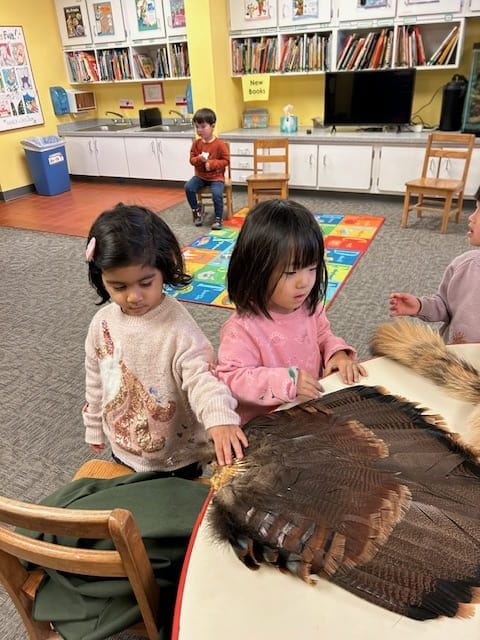




NATURE ON THE MOVE was here today: November 6
Our topic was: WILD TURKEYS
- Wild turkeys are smarter than domestic turkeys. They are able to take care of themselves.
- Male turkeys are called toms, females are hens and the young are poults.
- Males can spread their tail feathers into a large fan shape, in order to attract a mate.
The bright colors on their heads are also attractive to hens.
- Turkey hens lay their eggs on the ground. Not in a nest in a tree.
- Turkey feet are like a garden tool. They are used to rake through leaves for food
such as acorns, spiders, insects and various seeds.
- Turkey predators include coyotes, foxes and man; their eggs are eaten by
squirrels, snakes, coyotes and foxes.
Book Suggestions: Turkey Trouble, by Wendi Silvano.
Twas the Night Before Thanksgiving, by Dav Pilkey










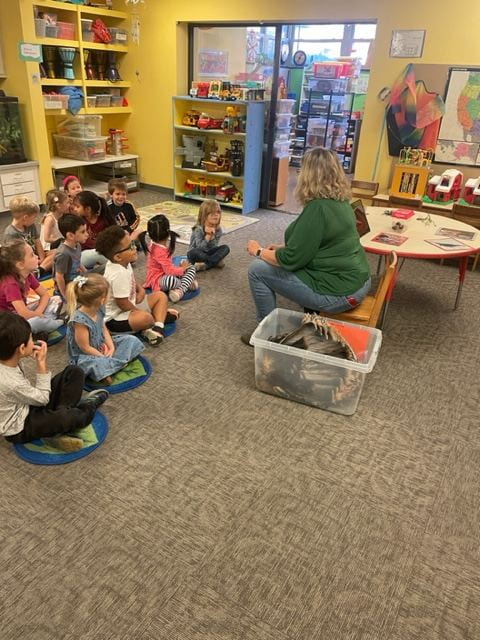


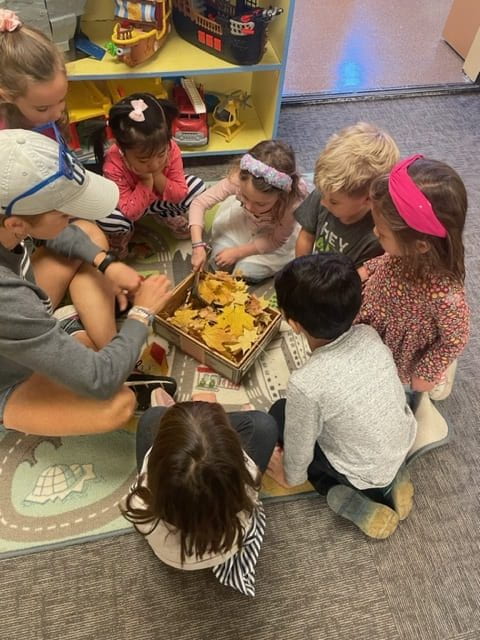
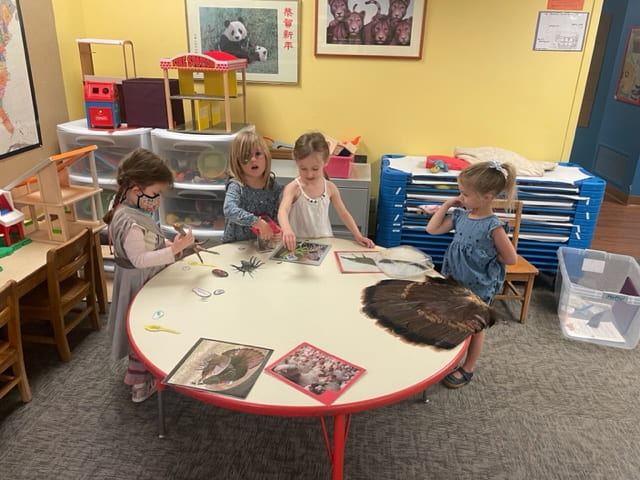
NATURE ON THE MOVE was here today, 10/16.
Our topic was:
NOCTURNAL ANIMALS
• Animals sleeping during the day and becoming active at night are called nocturnal animals.
Animals that sleep at night and are active during the day are called diurnal animals. We are diurnal animals!!
Why is being nocturnal helpful to some animals? If they are prey, it is easier to hide from predators at night. If they are predators, it is easier to be sneaky in the dark.
Nocturnal animals include, among others: moths, bats, owls, spiders, opossums and skunks.
Book suggestions: Owl Babies, The Kissing Hand, and The Goodnight Circle
Song: Have you ever seen a Moth, a Moth, a Moth? Have you ever seen a Moth Fly this way and that? Fly this way and that way, Fly this way and that way? Have you ever seen a Moth Fly this way and that? Continue with…Bat-Hang, Spider-Crawl, Owl-Hunt, Skunk-Spray.











NATURE ON THE MOVE was here today, 9/25.
Our topic was:
INSECTS AND SPIDERS
- Insects have six legs, three body parts, and two antennae.
- Spiders have eight legs, two body parts, and no antennae.
- Some insects have wings.
- Spiders never have wings, but they can spin webs.
- Insects have compound eyes, while spiders have up to eight simple eyes.
- Insects eat a variety of foods, including leaves, nectar, other insects.
- Spiders eat insects and other spiders.
- Insects and spiders provide food for animals such as birds, frogs, toads, turtles.
- 80% of all animal life are insects.

